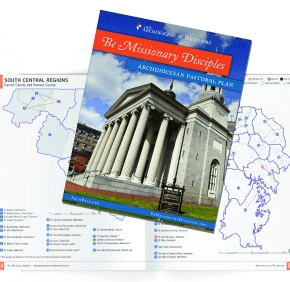
Prior to 2000, CARA reports Gallup estimates of the percentage attending in any given week adjusted for the effects of social desirability bias. From 2000 on the data are from the CARA Catholic Poll (CCP) and represents the percentage of U.S. adult Catholics who say they attended Mass every week. (Courtesy CARA)

Clergy process into the Cathedral of Mary Our Queen in Homeland during the 2016 Chrism Mass. (Kevin J. Parks/CR Staff)

Father Patrick Carrion, pastor of the Catholic Community of South Baltimore, baptizes a baby May 1 at Our Lady of Good Counsel in Baltimore. (CR File)
An altar server carries a crucifix at the 125th anniversary Mass of St. Clement I Parish in Lansdowne Aug 28. (Kevin J. Parks/CR Staff)

Young men pray in April 2015 at St. Bernardine in West Baltimore. (CR File)
Catholics usher in the Holy Year of Mercy in December 2015 at Our Lady of the Mountains’ Shrine of Ss. Peter and Paul in Cumberland. (CR File)
Also see:
Mission is at heart of pastoral planning in Archdiocese of Baltimore
Archbishop Lori updates planning strategy


